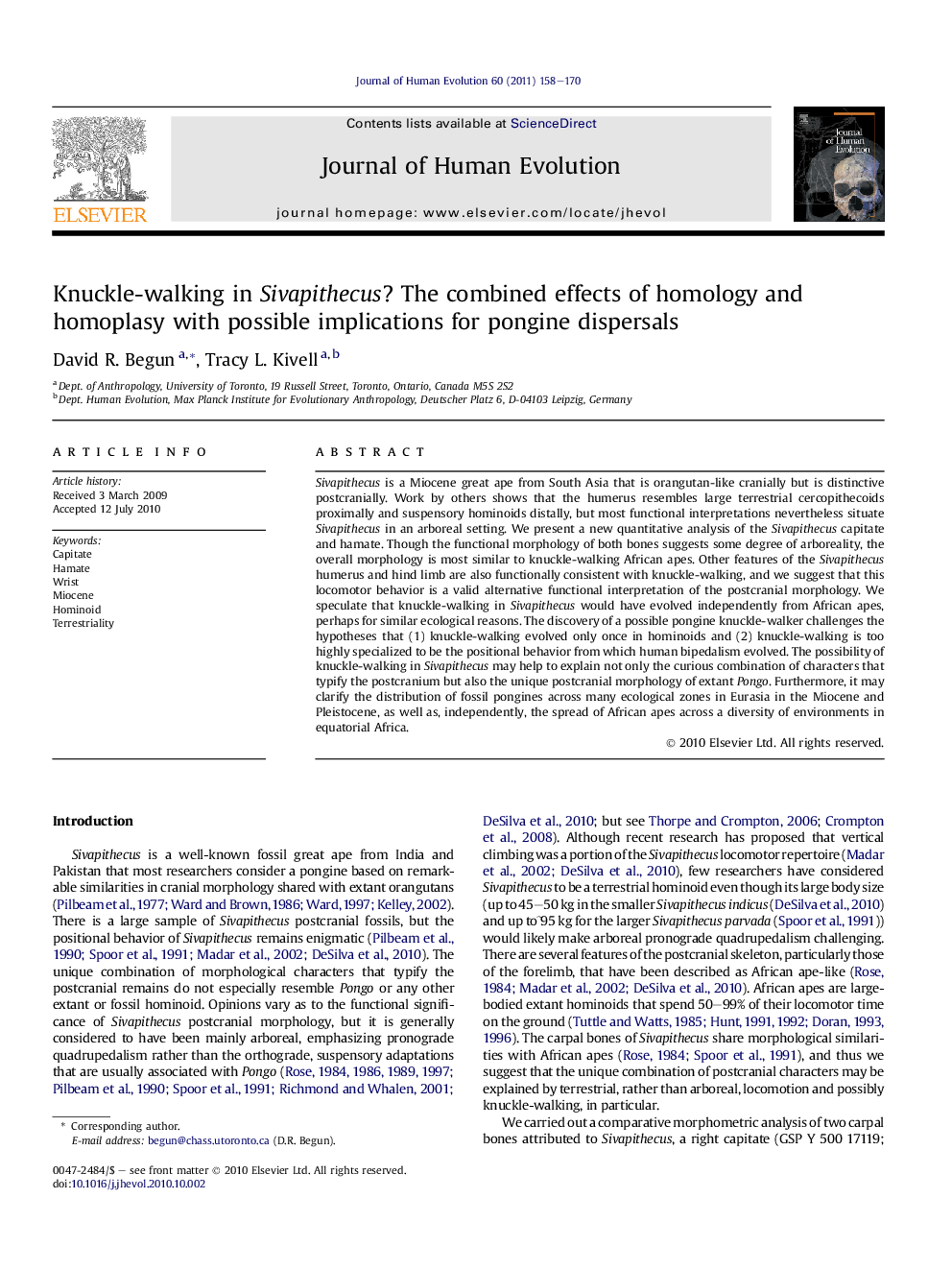| کد مقاله | کد نشریه | سال انتشار | مقاله انگلیسی | نسخه تمام متن |
|---|---|---|---|---|
| 4556678 | 1329496 | 2011 | 13 صفحه PDF | دانلود رایگان |

Sivapithecus is a Miocene great ape from South Asia that is orangutan-like cranially but is distinctive postcranially. Work by others shows that the humerus resembles large terrestrial cercopithecoids proximally and suspensory hominoids distally, but most functional interpretations nevertheless situate Sivapithecus in an arboreal setting. We present a new quantitative analysis of the Sivapithecus capitate and hamate. Though the functional morphology of both bones suggests some degree of arboreality, the overall morphology is most similar to knuckle-walking African apes. Other features of the Sivapithecus humerus and hind limb are also functionally consistent with knuckle-walking, and we suggest that this locomotor behavior is a valid alternative functional interpretation of the postcranial morphology. We speculate that knuckle-walking in Sivapithecus would have evolved independently from African apes, perhaps for similar ecological reasons. The discovery of a possible pongine knuckle-walker challenges the hypotheses that (1) knuckle-walking evolved only once in hominoids and (2) knuckle-walking is too highly specialized to be the positional behavior from which human bipedalism evolved. The possibility of knuckle-walking in Sivapithecus may help to explain not only the curious combination of characters that typify the postcranium but also the unique postcranial morphology of extant Pongo. Furthermore, it may clarify the distribution of fossil pongines across many ecological zones in Eurasia in the Miocene and Pleistocene, as well as, independently, the spread of African apes across a diversity of environments in equatorial Africa.
Journal: Journal of Human Evolution - Volume 60, Issue 2, February 2011, Pages 158–170